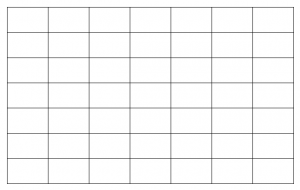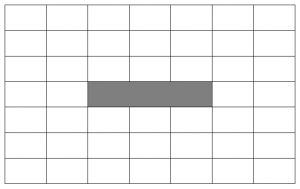Project Overview:
As a precursor to the current research into the impact of DIVERSE, a FED project was undertaken by a group of 3rd year students over the course of 3 months during Spring 2011. The aim of this FED project was to develop a virtual learning tool, with which students could use to collaborate together material relevant to their course through the use of resource clouds.
Project Team:
The project team consisted of five third year students all undertaking a degree within Computer Science. The members within the team included the following: Max Woollard, Ben Trott, Jamie Hutton, Lee Zerafa and Josh Stevens.
What is DIVERSE?
DIVERSE stands for Development and Integration of Varying Educational Resources and Student Engagment. DIVERSE is a virtual learning tool that allows students to share resource links through the medium of resource clouds. An example of such a resource cloud can be seen in the diagram below.
In this example, the size of the images is determined by the relevant rating stored within the database. The idea behind this being that as students rate up or rate down resources within the cloud, the size of the image changes to reflect the popularity, with the most popular resources in the cloud being the largest and the less popular ones being the smallest.
The reason for choosing dynamic images as opposed to a list stems from the ” ” theory which states that in a list only the top items are the ones that are viewed; in this case these will be the ones that receive the most votes. This is due to the fact that lists are linear, they are often very similar and can be very boring; the brain doesn’t like this and often switches off to find something more interesting. Another problem with lists is typically the result of a ranked list is a scenario in which the rich get richer; the highest ranked list items get viewed more and more, meanwhile the rest of the list remains unchanged. One of the aims of DIVERSE is to overcome this through the use of dyanmic images; using a method such as this will hopefully help to make the information more appealing and easier to interpret.
Project Outputs
The following bullet points outline the desired outputs for this project:
-
A DIVERSE tool for collating and most importantly ranking available resources relating to a specific identifed/nominated topic.
-
A publication on the development and application of DIVERSE in a peer reviewed academic peer reviewed journal / conference.
- School report on the effectiveness of DIVERSE for use in modules CMPM3637M and CMP2066M.
Finally, one the intended outcomes of the project is a rise in students ability to actively seek and find information relevant to their subjects, it would be hoped that such a skill would benefit them in their future educational pursuits and specifically their final year research projects.
What we did
The first step towards meeting this projects goals was the creation of the DIVERSE tool. The tool itself was written and developed in PHP, while also utilising MySQL for managing all the data on the links and resources stored in the respective resource clouds. The decision to use these languages for this project was three fold. Firstly every member of the project team could had a good working knowledge and experience in using these languages, and so this meant everyone could contribute to the tools development. Secondly both PHP and MySQL are cross platform and open source; this means applications written in these languages are easy to deploy and use. Finally PHP is a lightweight language well suited for the demands a web application such as DIVERSE would have.
The dynamic nature of the resource clouds meant the layout of the clouds was somewhat more complicated than normal, as typically in order to create such a cloud would be to use a grid. In the case of DIVERSE the grid size chosen was 7×7 as it was felt this was a good medium as it allows 49 images which should be more than enough, given that the resource clouds represent a subtopic within a module; this also means as clouds are unlikely to be full the clouds themselves look more spaced and cleaner.
However the problem with this is the tool needs to space different sized images in order to avoid creating a cramped unusable mess. Furthermore the tool also needed to be able to spread the resource images evenly throughout the grid, and also needed a means of not filling the central part of the resource cloud where the cloud name should be. So in the case of DIVERSE the cloud looks like this in terms of design:
The choice to have a 7×7 grid also means that with the reserved area for the title it creates a symmetrical design.
Through the use of randomisation it was then possible to add the images, with their relative rating, to the unreserved areas of the grid. The grid constrains the images in such a way to keep them organised whilst still managing to make them look random. The rating determines the size of the image, the PHP code then randomises the images and places them onto the 7×7 grid creating the resource cloud. Each image also stores the relevant URL to the content it is displaying; through this users are able to click the images and be taken to the relevant content; this allows for quick and easy access to resources stored within the cloud.
Project Conclusion
After completing the development of the DIVERSE tool a general consensus among the project team was that the tool could be used in a positive way for students at university, and so based on this the project could be developed further. One such example of the tools use is it could be used to build more relevant and up to date reading lists for university modules. The resource clouds DIVERSE produces also can be used to create a strong base for research in regards to assignments; this would be particularly helpful for first year students as one of the most difficult things for first years is getting to grips with referencing, a problem this tool could help mitigate.



